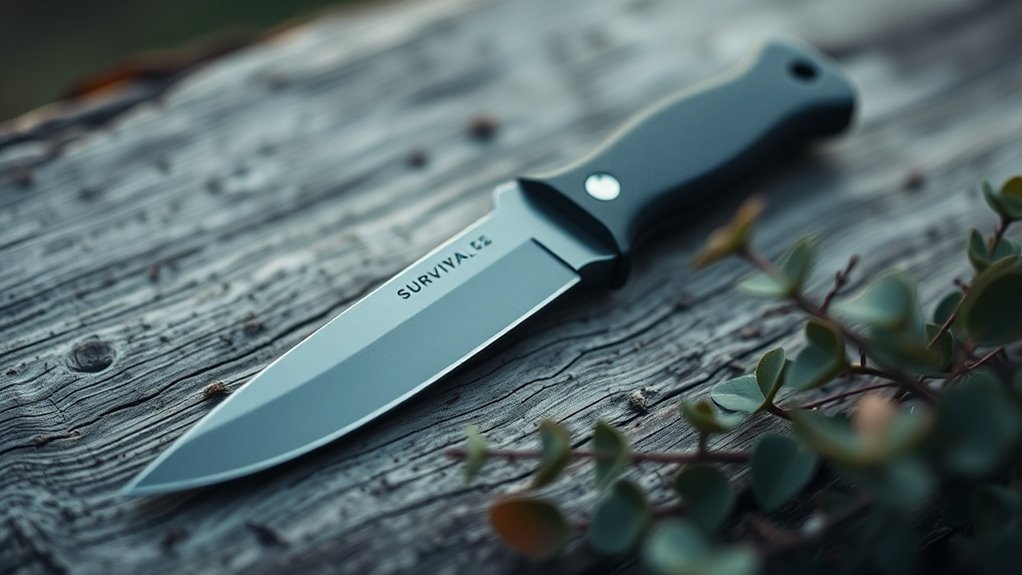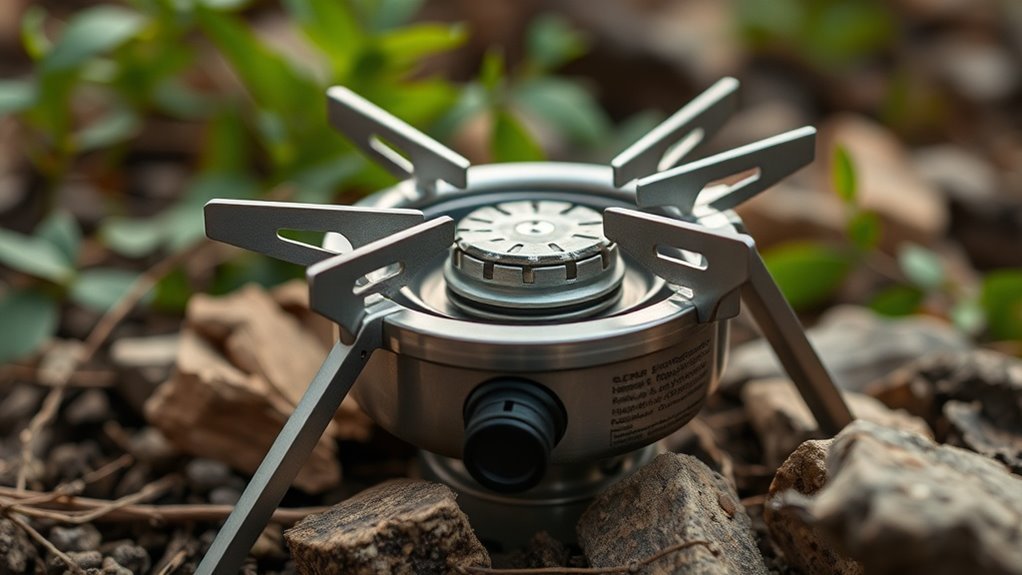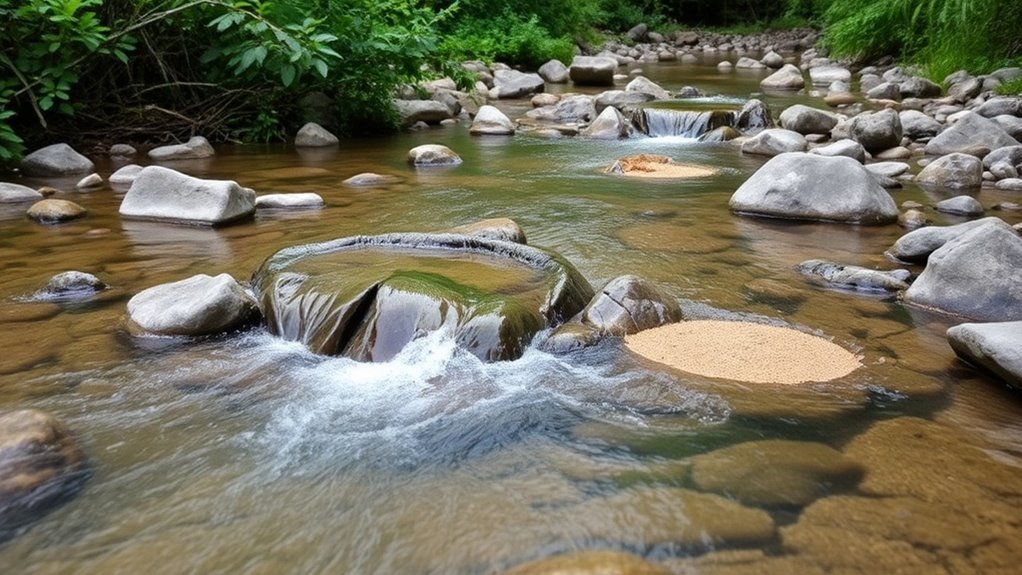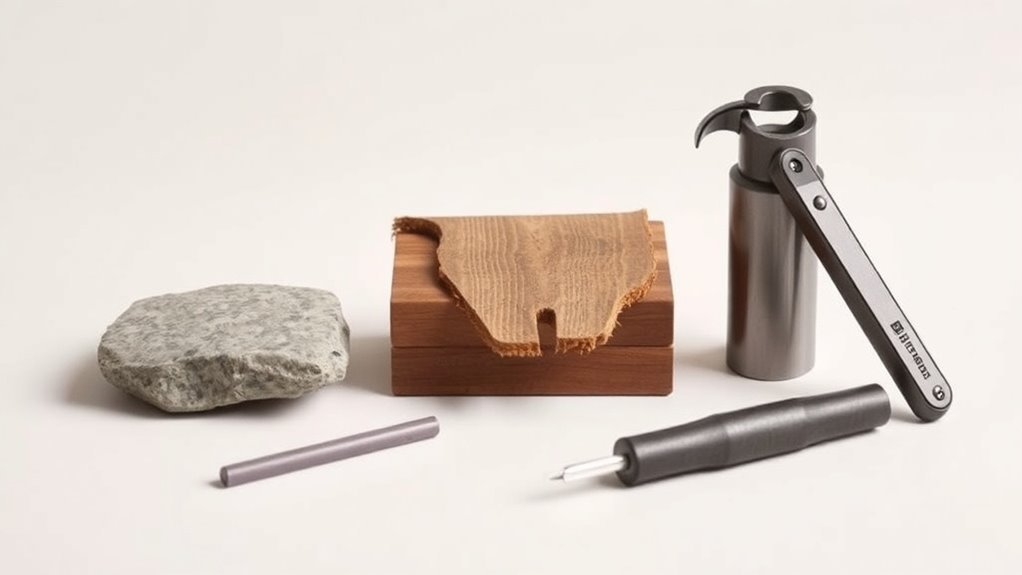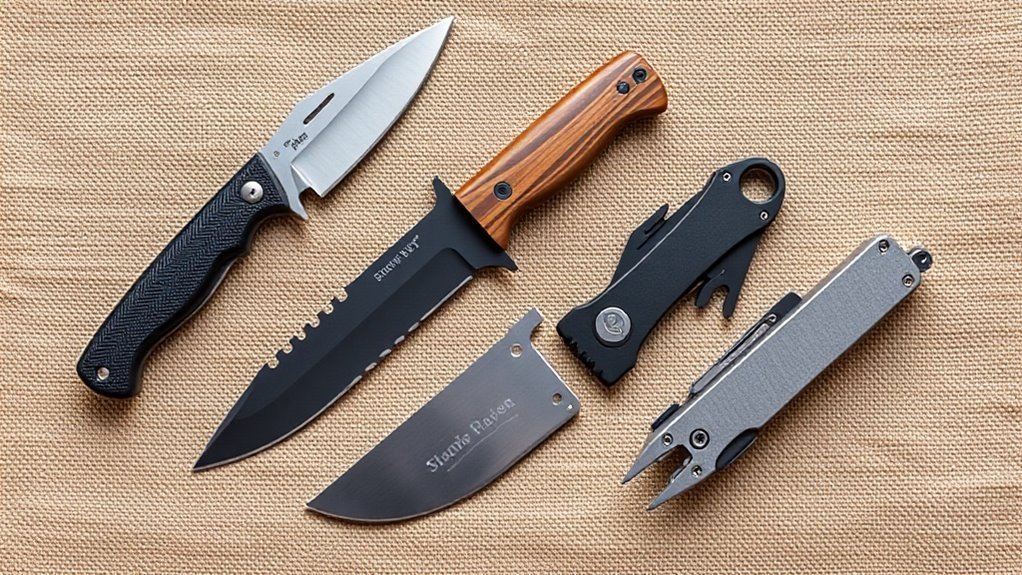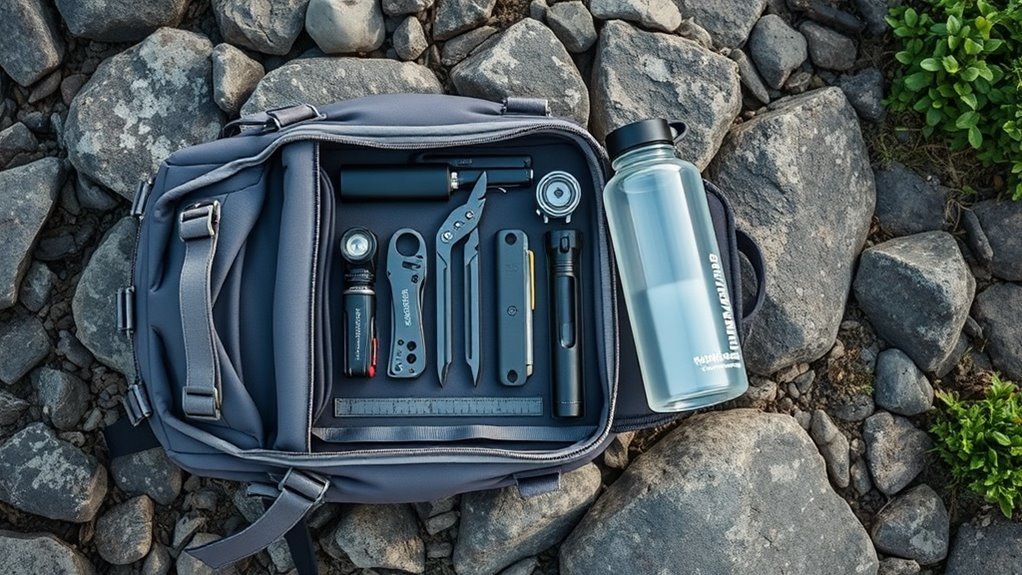Safety Rules for Handling Camping Axes & Hatchets
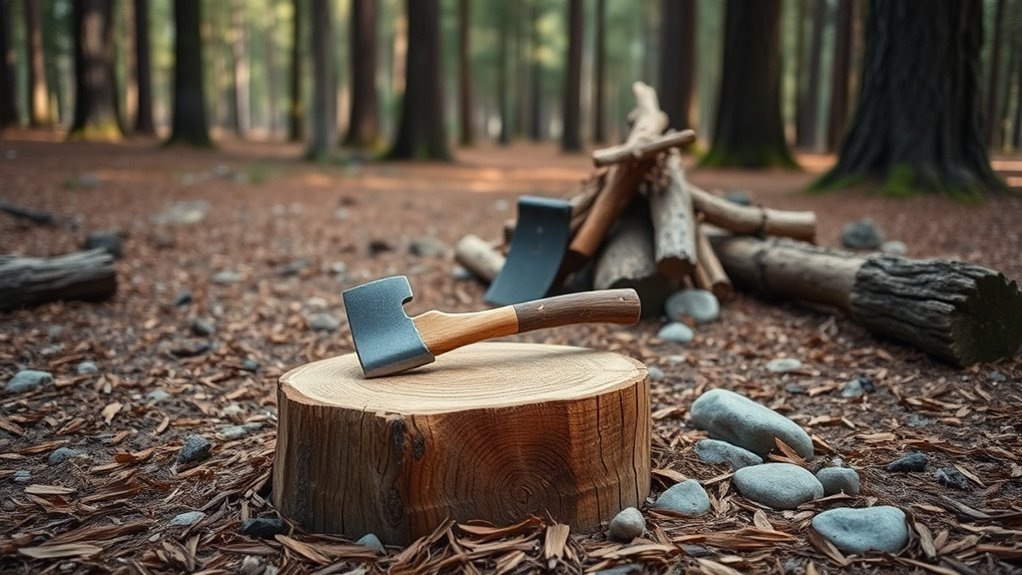
When handling camping axes and hatchets, always inspect your tools before use. Make sure the blade is sharp and the handle is secure. Use a firm two-handed grip and maintain a balanced stance. Always clear the area of obstacles and bystanders before swinging. Store tools safely in a designated spot, using sheaths to protect the blade. Understanding these safety rules is essential to avoid accidents and injuries. There’s much more to explore about maintaining your equipment and personal safety.
Key Takeaways
- Always inspect the axe or hatchet for nicks, cracks, or rust before use to ensure safety and effectiveness.
- Maintain a firm grip with both hands, keeping your dominant hand near the head for control while swinging.
- Stand with feet shoulder-width apart to ensure stability and balance when using the tool.
- Use a secure sheath for safe storage and protection of the blade when not in use.
- Be aware of your surroundings and communicate clearly with others to prevent accidents while operating the tool.
Understanding the Anatomy of Camping Axes and Hatchets
When you’re out in the wild, knowing the anatomy of camping axes and hatchets can make all the difference.
Understanding these tools involves familiarizing yourself with key components. The blade, often made of high-carbon steel, is designed for cutting and chopping, while the edge should be sharp for efficiency.
Familiarizing yourself with the blade’s components enhances efficiency and effectiveness in cutting and chopping tasks.
You’ll find that the head sits firmly on the handle, which is usually crafted from durable materials like hickory or fiberglass to absorb shock.
The grip at the end of the handle, or the pommel, aids in control and stability during use. Additionally, knowing the balance point helps guarantee that the tool feels comfortable and manageable in your hands, making your outdoor tasks easier and safer.
Choosing the Right Tool for the Task
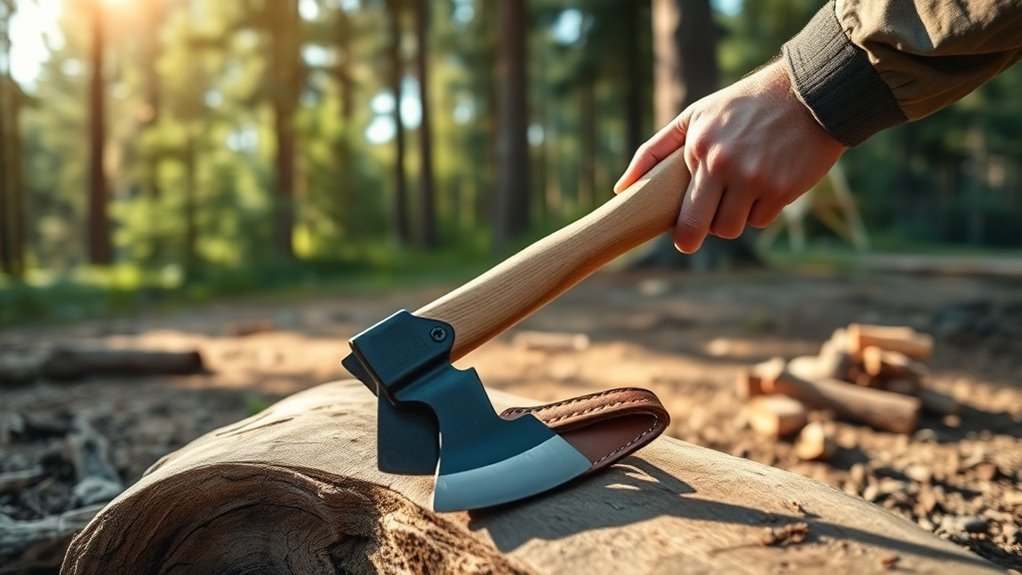
When it comes to choosing the right camping tool, size really matters.
You’ll want to contemplate the blade type and handle length based on the tasks you plan to tackle.
Picking the right axe or hatchet can make all the difference in your camping experience.
Size Matters
Selecting the right camping tool can make all the difference in your experience outdoors. When it comes to camping axes and hatchets, size really does matter. A lighter, shorter hatchet‘s perfect for quick tasks like whittling or chopping smaller branches. It’s easier to handle and pack, too.
On the other hand, if you’re planning to split larger logs or prep firewood, a bigger axe with a longer handle can provide more power and stability. Consider your strength and comfort as well; you want a tool you can wield safely without straining yourself.
Always match the size of your tool to the task at hand, ensuring efficient work and minimizing the risk of accidents while you’re enjoying the great outdoors.
Blade Type
Choosing the right blade type is essential not only to your efficiency but also to your safety while camping.
You’ll typically find axes with either a broad or narrow blade. A broad blade is better for chopping through larger logs or heavy tasks, while a narrow blade shines in more delicate tasks like carving or making kindling.
If you’re mainly splitting wood, an axe with a wedge-shaped blade is ideal. On the other hand, if your focus is on smaller projects or precision work, a hatchet with a thinner blade may suit you better.
Always consider the specific task at hand and select a blade that matches it closely to guarantee effectiveness and minimize accidents while you’re out in the wild.
Handle Length
The length of the handle on your axe or hatchet can greatly impact your performance and safety while camping.
Shorter handles, usually ranging from 12 to 16 inches, offer better control and are ideal for precision tasks like carving or cutting smaller branches. However, if you’re splitting wood or tackling larger logs, a longer handle—between 18 to 28 inches—provides more leverage and power.
Make certain to choose a length that matches your strength and comfort level; you shouldn’t feel strained while using the tool.
Also, consider the intended use: a hatchet works well for quick jobs, while a full-sized axe is better suited for heavy-duty work. The right handle length guarantees efficiency and minimizes the risk of injury.
Inspecting Your Equipment Before Use

Before heading into the great outdoors, take a moment to thoroughly inspect your axes and hatchets. Check the blade for any nicks, cracks, or rust—this could hinder performance and pose a safety risk.
Make certain the cutting edge is sharp; a dull blade requires more effort and can lead to accidents.
Next, examine the handle for splinters, cracks, or looseness at the head. A secure connection is vital for preventing mishaps.
Examine the handle for any damage; a secure connection is essential for safety and preventing accidents in the great outdoors.
Don’t forget to clean any debris off the equipment; dirt can hide damage.
Finally, be sure to store your tools properly, protecting them from moisture and oxidation.
Taking these steps will help you stay safe and enjoy your time outdoors with confidence in your gear!
Proper Handling Techniques
Proper handling techniques for camping axes and hatchets are essential for ensuring safety and efficiency. First, always grasp the handle firmly with both hands, positioning your dominant hand near the head and your non-dominant hand towards the end. Keep your stance balanced, with feet shoulder-width apart. When swinging, use your whole body for momentum, not just your arms, and maintain control throughout the swing.
| Technique | Description |
|---|---|
| Grip | Use both hands, firm grip |
| Stance | Feet shoulder-width, balanced |
| Body Movement | Use full body, control swing speed |
Maintaining a Safe Distance From Others
When using camping axes and hatchets, keeping a safe distance from others is key to preventing accidents.
Ideally, you should establish a minimum radius of at least 10 feet around your workspace. This distance guarantees that no one inadvertently wanders into your swing zone.
Always be aware of your surroundings and the people nearby, especially if you’re in a group. Make it clear when you’re about to use your axe or hatchet so others can step back.
Stay mindful of your surroundings and communicate clearly with others when using your axe or hatchet.
If you notice someone getting too close, politely ask them to move away.
Clear the Area Before Swinging
To guarantee safety while using your camping axe or hatchet, it’s important to clear the area around you before you start swinging.
Take a moment to inspect your surroundings and verify there are no obstacles, such as rocks, branches, or other equipment that could interfere with your movements.
Look out for people and pets as well; you don’t want anyone to be accidentally injured by a missed swing or flying debris.
Make sure you’ve got a clear, ample space to work in, allowing for a full range of motion.
If you’re in a group, communicate your intentions clearly so everyone understands what’s happening.
Safety first—clearing your surroundings creates a secure environment for effective and responsible chopping.
Storing Tools Safely When Not in Use
When you’re not using your camping axe or hatchet, storing them safely is essential. You should always use a secure sheath to protect the blade and designate a specific spot for your tools. Proper storage reduces the risk of accidents and keeps your tools in good condition. Additionally, ensure that your tools are stored in a dry, cool environment to prevent damage from humidity and temperature extremes.
Proper Tool Storage
Safe storage is essential for guaranteeing that camping axes and hatchets remain in good condition and don’t pose a risk when not in use.
First, always store these tools in a dry place to prevent rust and damage. Use a dedicated tool box or a shelf to keep them off the ground and away from moisture.
Verify they’re stored away from children and pets to avoid accidental injury. If using a garage or shed, consider creating a designated space with labels for quick identification.
Regularly inspect your tools for wear or damage during storage, so you’ll know they’re ready when you need them.
Following these practices keeps your equipment safe and extends its lifespan considerably.
Secure Sheath Usage
A secure sheath is essential for safely storing your camping axe or hatchet when it’s not in use. It protects the blade, preventing accidental cuts or damage, while also shielding the tool from dirt and moisture that can lead to rust.
Always use a sheath specifically designed for your axe or hatchet, ensuring it fits snugly. Before storing, check that the blade is clean and dry, and don’t forget to secure the latch or strap.
When you put your tool away, make sure the blade is completely covered. If you’re on the move, keep the sheath on until you’re ready to use it.
Prioritizing this simple practice keeps everyone safe and your tools in top condition.
Designated Storage Area
Storing your camping axe or hatchet in a designated area helps maintain safety and organization.
Choose a specific spot for your tools, away from high traffic areas, ideally in a locked shed or secured toolbox. Make certain it’s easily accessible when you need it but guarded from unauthorized users, especially kids.
Confirm that the storage area is dry to prevent rusting. Hang your axe or hatchet on a hook or place it in a sturdy sheath to avoid accidents. Remember to keep the area clutter-free to lessen the risk of injury when retrieving your tools.
Knowing What to Do in Case of an Accident
While no one wants to imagine an accident occurring while camping, knowing how to respond can make all the difference.
First, stay calm and assess the situation. If someone is injured, prioritize their safety and move them away from any hazards. Apply pressure to bleeding wounds with a clean cloth or bandage.
If you suspect a serious injury, like a fracture, avoid moving the person unless absolutely necessary. Call for help if you’re in a remote area, and use your phone to reach emergency services if possible.
Always keep a first aid kit handy, and familiarize yourself with its contents. Finally, be honest about the incident when recounting details to medical professionals. Your quick actions can greatly influence recovery.
Questions
Can I Use a Camping Axe for Splitting Firewood?
Yes, you can use a camping axe for splitting firewood. Just make sure it’s sharp and well-balanced. Using proper technique will make the task easier and more efficient, ensuring you enjoy your camping experience.
What Is the Best Way to Carry an Axe Safely?
You wouldn’t want to juggle a flaming baton, right? Carry your axe with the blade facing down, securely sheathed, and grip it firmly. This keeps you safe while looking like an expert woodsman ready for adventure!
How Should I Clean My Camping Axe After Use?
After use, wipe your camping axe with a clean cloth to remove dirt and moisture. For sticky residue, use mild soap and warm water, then dry it thoroughly to prevent rust and maintain functionality.
Are There Age Restrictions for Using Camping Axes or Hatchets?
There aren’t strict age restrictions, but many camps suggest kids under 16 shouldn’t use axes without supervision. Statistically, injuries often occur when young users are unsupervised, emphasizing the importance of adult guidance and safety.
What Materials Are Safest for Axe or Hatchet Handles?
Wood, fiberglass, and carbon fiber are the safest materials for axe or hatchet handles. Each offers a good balance of strength and shock absorption, ensuring a comfortable grip while minimizing the risk of splintering during use.
Conclusion
In summary, handling camping axes and hatchets safely is like maneuvering through a dense forest; one wrong move can lead to trouble. By knowing your tools, practicing proper techniques, and maintaining awareness of your surroundings, you can enjoy a safe and successful outdoor experience. Remember, safety isn’t just a precaution—it’s the compass that guides your adventure. So gear up, stay alert, and let every swing of your axe bring you closer to nature without the worry.

